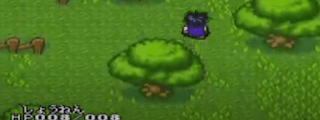Esparks: Ijikuu Kara no Raihousha is a charming throwback to the 16-bit action RPGs of the 1990s. With its top-down perspective, real-time combat, and lighthearted story, it evokes fond memories of classics like The Legend of Zelda: A Link to the Past. While it doesn't necessarily break new ground, Esparks delivers a polished and enjoyable experience for fans of the genre.
The game puts players in the shoes of a young hero whose family has been kidnapped by an evil villain. After acquiring the mystical powers of Esparks, the hero sets out on a quest through time to track them down. The story is fairly simple and straight forward, but provides enough motivation to keep pushing forward through the game's many dungeons and battles. The time travel elements are particularly enjoyable, allowing players to revisit areas in both the past and future.
Pixel Powerhouse
Esparks features delightful 16-bit pixel art that looks like it could have come straight from the SNES era. The sprites are charming and full of personality, from the hero's dramatic sword slashes to the comical walking animations of NPCs. The environments are vibrant and varied, ranging from medieval towns to futuristic cityscapes. It's a visually appealing game that immerses players in its retro world. The soundtrack also delivers catchy, synth-heavy tunes befitting the era.
Slash and Dash
Combat is where Esparks truly shines. It utilizes a real-time battle system similar to Secret of Mana, with free-flowing hack 'n slash action. The hero can slash away at enemies using his energy sword, dodge roll out of the way of attacks, and unleash special moves by building up a power meter. The combat feels highly responsive and smooth, allowing players to take down hordes of monsters with satisfying combos. Occasional screen-filling bosses require learning patterns and finding openings to strike. Overall it's an absolute blast to slash through the varied enemies and challenges the game throws your way.
Explore the Space-Time Continuum
In addition to the stellar combat, Esparks offers plenty of content and secrets to discover as players journey across its world. There are numerous towns filled with NPCs to talk to, side quests to undertake, and hidden areas to uncover. Dungeons are creatively
designed with puzzles to solve and traps to navigate. The time travel mechanic adds replayability, allowing players to revisit areas in new time periods to find additional items and story elements they may have missed. For completionists, there are tons of collectibles and achievements to earn. The game should provide a solid 12-15 hours of entertainment for most players. https://www.game24hours.com/2023/08/energy-breaker.html
Review: 8/10
Overall, Esparks: Ijikuu Kara no Raihousha is an absolute delight for retro RPG fans. With its vibrant pixel art, slash-happy combat, and time-hopping adventures, it successfully channels the spirit of 16-bit classics. While the story is fairly simple, the gameplay offers plenty of content and variety. If players have fond memories of A Link to the Past or Secret of Mana, then Esparks will fill that nostalgic craving.
In conclusion, Esparks: Ijikuu Kara no Raihousha is a polished and enjoyable action RPG for those looking for a nostalgic 16-bit experience. It may not push the genre forward, but delivers plenty of retro enjoyment with its vibrant pixel world and excellent combat system. Fans of classic top-down RPGs shouldn't hesitate to take a trip through this time-hopping adventure.
Pros:
*Satisfying real-time combat
*Charming retro pixel artstyle
*Catchy soundtrack
*Time travel elements spice up replayability
Cons:
Story is fairly simplistic
Can feel repetitive after extended playtime

Comments
Post a Comment